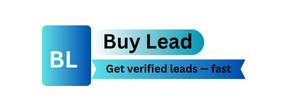SMS marketing is a powerful tool. It offers impressive open rates. Businesses widely use this channel. Understanding its cost structure is crucial. This guide explores SMS marketing pricing. It helps you make informed decisions. We will uncover what drives these costs. Our aim is to ensure smart investment.
Understanding SMS Marketing Pricing: What Influences Costs?
SMS pricing isn’t always straightforward. Many factors influence the total cost. Knowing these elements helps effective budgeting. It ensures you select the right plan. This avoids unexpected expenses. We will explore key influencing elements. These include message volume and desired features. Different provider types also play a role. Sender IDs like short codes impact costs.
Message volume is a primary factor. Sending more messages often increases total spend. However, the per-message rate might decrease. Inbound messages can also incur charges. This depends on the provider. Different SMS marketing platforms have varied rates. Bulk discounts are commonly offered. Features also significantly influence pricing. Analytics tools add value. Automation features increase the price. Personalization options might too. Dedicated phone numbers cost more. Sender ID options vary in price. Short codes are premium choices. Long codes are more affordable. Toll-free numbers are another option. Each option has specific uses and costs.
Key Factors Affecting SMS Marketing Costs
Volume discounts are common. Higher message volume usually means lower per-message rates. Providers offer tiered pricing structures. This strategy rewards large-scale senders. It makes high-volume sending more economical. Features and functionality also impact price. Advanced features increase the overall cost. These might include CRM integrations. Two-way messaging capabilities add value. Auto-responders enhance customer interaction. All these contribute to higher pricing tiers.
The type of SMS can also affect pricing. Some providers differentiate costs. Transactional SMS might be cheaper. Promotional messages could cost more. This often depends on local regulations. Geographic reach is another factor. Sending messages internationally costs more. Local messages are typically cheaper. Carrier fees vary by country. Dedicated numbers come with distinct pricing. Short codes are expensive due to high throughput. Long codes are more affordable. Toll-free numbers serve specific business needs. Each type has a unique pricing model.
Navigating SMS Pricing Models: Pay-As-You-Go vs. Subscriptions
Various pricing models exist. Pay-as-you-go offers great flexibility. You purchase a block of credits. These credits are used per message sent. This model suits irregular campaign schedules. There are no recurring monthly fees. It is ideal for smaller businesses. Businesses with unpredictable needs benefit.
Monthly subscriptions are another popular choice. These plans offer message bundles. You get a set number of messages included. Overage fees apply if you exceed this limit. Subscriptions suit consistent SMS users. Larger message volumes often get better rates. Tiered pricing is the most popular model. The price per message decreases. This happens as your message volume increases. It encourages higher usage over time. Businesses can scale their efforts effectively. When choosing, assess your specific needs. Estimate your message volume. Do you require advanced features? Your budget is a critical factor. Look for transparent pricing structures. Consider your future growth potential. A good **List to Data** solution can help manage your contact lists efficiently, complementing any SMS strategy effectively.
Unveiling Hidden Fees in SMS Marketing Solutions
Always look beyond the advertised price. Potential extra costs can arise. Some providers charge for inbound messages. This means receiving texts costs money. Others might have setup fees. These are one-time charges at the start. Dedicated numbers often carry monthly rental fees. This is separate from message costs.
Carrier surcharges are also possible. These vary by mobile network. They can impact your total campaign costs. Always request clear terms of service. Avoid unexpected bills from your provider. Always ask for a full pricing breakdown. Ensure there are no hidden surprises. Transparency is key for budgeting. Understand all potential charges upfront.
Optimizing Your SMS Marketing Budget for Maximum Reach
Efficient SMS usage saves money. Segment your audience carefully. Send relevant messages to specific groups. Optimize your message length. Keep it concise for impact. Use compelling calls to action (CTAs). These drive desired user behavior.
Track your campaign performance closely. Analyze your open rates. Monitor conversion rates diligently. A/B test your messages. This refines your overall strategy. It maximizes your return on investment (ROI). Negotiate with providers, especially for high volumes. They might offer custom plans. Choose a reliable platform. One that offers good customer support. This ensures smooth operations. Such planning leads to cost-effective campaigns. It helps achieve your marketing goals.
SMS marketing is highly effective. Understanding its pricing is vital. Consider your message volume. Evaluate needed features. Choose the right pricing model. Watch out for any hidden fees. Optimize your campaigns for efficiency. This ensures a great return. Make informed decisions. Your budget will be well managed.
